S2:E40 Joe Pettit and Mike Mouw - The Power of the Edge- PODCAST TRANSCRIPTION
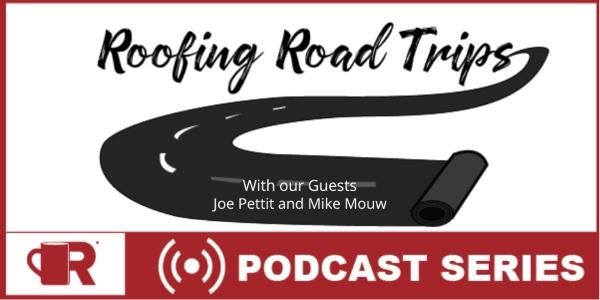
Editor's note: The following is the transcript of an interview with Joe Pettit and Mike Mouw, from Estimating Edge. You can read the interview below or listen to the podcast here.
Karen Edwards: Hello everyone, this is Karen Edwards, editor at RoofersCoffeeShop. And joining me today are two guests from The EDGE estimating software and I'd like to welcome Joe Pettit and Mike Mouw.
Joe Pettit: Hi Karen-
Karen Edwards: Welcome guys. Hi, it's great to be here with you today.
Joe Pettit: Well it's great to be here with you.
Karen Edwards: Let me start by Joe and Mike you've been over 30 years in the industry and at The EDGE, which is incredible. You don't see that kind of longevity too often anymore in the workforce, so I'm sure you have an amazing amount of wisdom to share with our listeners today. And I want to start by maybe having each of you introduce yourself and tell us what you do there at The EDGE. Joe do you want to start?
Joe Pettit: All right. Okay. I am a technical support specialist, so basically I train people on how to operate the program. I also train employees, lots of times when we hire a new tech person or something like that. And I assist with the design, from a construction side at least, of sometimes new programs like our Fireproofing program that just came out, with the developers. I do not know how to program but the developers do that part and I give the construction side of things, along with others in our company that do the same thing. So it's primarily training and technical support, and I love my job, and I love the guys I work with.
Karen Edwards: That's awesome. And Mike what's your story?
Mike Mouw: Well I started a bit after Joe. Joe's been here 30 years plus. I've been with The EDGE for 21 years and counting. It's a great place to work, great environment, and just something about what we do keeps it exciting and new every day. I started under Joe and Joe's been my boss just about forever, but I'm now the manager of Tech Support and Training. So I'm overseeing the department. Some of that wisdom is asked upon, when different technical issues do arise and just thrilled to try to figure out this maze of technology. It is ever changing, the environment's changing, people are changing, and so wow what a cast of things that can happen from day to day but keeps us young and keep the mind sharp.
Karen Edwards: Wow. Well you said, it's something new every day and technology it is advancing by leaps and bounds. I want to know what was it like at The EDGE when you started there Joe? How dinosaur age was it?
Joe Pettit: Well-
Mike Mouw: Abraham Lincoln ... I mean, I'm sorry.
Joe Pettit: Well to give you a little idea I started in 1989, the company started in 1986. When I started they were getting ready to release version 5.5 of the program, DOS 3.3 had just come out, and the screens were just changing from amber and green to starting to use ... Somewhere right around there we started to use VGA and color monitors.
Karen Edwards: Wow. What did the estimates look like?
Joe Pettit: Well The EDGE, right from the beginning, has been something where you could digitize. Now back in the very beginning it was an electronic Sonic Digitizer that worked off sonic ultrasound waves, so if you had a bump in your drawing sometimes it would mess up the coordinates that it would give you. But then we had transitioned to electronic digitizers, which were kind of like a big electronic drafting table with a little electronic grid underneath it, and you could take an electronic pen and go through up to an inch thick set of drawings, and work with your blueprints that way. So we did that right from the beginning and a lot of the reports look very similar to what we had back then, although the drawing capabilities were nothing like what they are today.
Karen Edwards: Right, I imagine so. And what was the reception from contractors? I imagine it was a little intimidating.
Joe Pettit: Well it was intimidating but it was also a new exciting technology back then. Back then, to give you a little idea, typically when I would go to train someone it would be often that that would be the first computer they had in their company, that they were using for The EDGE. And back then we even sold computers because so few people knew what to buy. So we bought some from our local computer company, which was kind of like a generic homegrown company, and then back then we were selling computers from this up and coming company out of Texas called Dell.
Karen Edwards: Yes, Dell, very, very popular small business and personal computer company. That's really interesting to see that you actually had to supply the computer because they were not common in 1989, that's for sure. Not like they are today. So Mike, what was the environment like when you joined 21 years ago? We had Windows operating system, probably.
Mike Mouw: Well that was just coming online. When I showed up in 1999/2000 our program EDGE for Windows came out and it was the first real Windows based EDGE estimating program. I did have to drop back and learn a little bit about the DOS program, the black background, the white and yellow numbers, and letters, so it was quite interesting. It was an interesting start for me because I really did not have any computer background, outside of I did have some programming knowledge back a long time before in college. So I had a lot of the aptitudes but I didn't own a computer when I started in 2000. And so they figured I was going to be able to help just because of all my experiences, I had a family in construction, I was coming out of the construction field at the moment so I had learned a lot. But, "Here's your computer," and I said, "Well that's nice. What do you do with that? What, you push that button?" And so I learned how to use a computer in about five days and then I learned The EDGE in another three to six months, with Joe's help, and then began helping others use the program.
Karen Edwards: So you come from a construction background, that gives you a unique understanding of your customers and what they're trying to do.
Mike Mouw: Well yes, and Joe as well. Matter of fact, Joe was the one that actually brought me into The EDGE because he had some interaction with my family's construction company. So Joe brought me in and that environment, the being on the roof, Joe's a construction background guy, it definitely helps talking to our clients, helping them understand the computer side because we understand their side as well, so it has worked out. Just one of those happenstance things that I did have that construction background.
Karen Edwards: Nice. So let's talk a little bit about that longevity. The EDGE has been around since 1986. That is incredible because computers weren't mainstream, like you mentioned, you had to become a computer seller as well. You don't see too many companies that have been around that long. How do you think that that is an advantage for a contractor who is trying to decide what kind of estimating software to choose?
Joe Pettit: Well it's just because it's old doesn't mean it's good, but the fact that a company has ... A small company, we're a relatively small company, and to have a computer related company that has survived it does say a bit for the ... Probably for the program and for the organization. And I think in our case having an original owner of the company, who had a construction background and was a extremely hard worker; probably the hardest worker of all of us at the time, and very dedicated, very loyal to his employees, and very loyal to the industry and improving things in the company, and in the program; that's made a big difference. So that you can't stay in one spot in the software industry, you have to continue improving.
Karen Edwards: Look what happened to America Online, right?
Joe Pettit: Right.
Karen Edwards: They dominated back in the '90s and up into the 2000s, and then they're barely around anymore. Okay, so let's talk a little bit about choosing an estimating software and what are some things that contractors should be looking for when they're choosing?
Mike Mouw: I would say when I ... We come across a lot of contractors and they're looking for a complete system. A lot of times they're looking for a software that will take them all the way. There's companies that do bits and parts of different things, where The EDGE has an edge is that our experience, our ... We've learned along the way, we keep up with the times. The times are changing thus your software has to change, has to do it successfully. One thing someone looking for software should really look at is customer support. We have manpower, we are edging into more of the cloud environment and cloud ... A lot of people will like to go to the cloud for their information and how to, but we have a host of guys that are ready to help a client understand what he's doing, help him through an issue. So those are some of the things, certainly looking at a software company, that are important. They want someone to talk to, especially in this environment. It's a, "I need something very, very soon. The bid is due. I have an issue," and that phone is right there, so it's great to be able to get help quickly and that's one of the good things we do offer.
Joe Pettit: And one other thing I'd like to just mention there, Mike, is you want to think through what you need in your company, not just for what you need today but what you think you will need three to five years down the road, so that whatever you purchase will grow with you. There's a lot of programs out there that I could buy that would allow me to do word processing but if I want to buy something that will allow me the flexibility of growth then I'm going to buy a program such as Microsoft Word, or something like that, that allows me to have a lot more flexibility than I really need at the moment. So you want something that's going to be able to grow with you.
Karen Edwards: That's an important point, I think. And Mike you mentioned that when people are looking for a solution they want one that ... In your dreams there would be a program that could do everything for you but that's really just not the case. So is integration and that intercommunication between other programs an important factor for most contractors?
Mike Mouw: Well it sure is, and it's becoming more and more of a factor. And as we have grown we've understood that and we've opened those doors, that we can talk outside of our program. And we're getting more and more corporations, companies, to partner up with us, to have relationships with, that we can actually tap into their technology workspace and data stuff. So it is today's environment to be able to be open-sourced, in a way. And that's one of our top priorities these days, to bring that to our clients.
Karen Edwards: Excellent. Tell me what The EDGE does differently, because there are a lot of choices out there. And you mentioned customer support and training, and that obviously is very important. What are some other things that make you stand out from the crowd?
Joe Pettit: If I had to say, generally speaking, a lot of estimating programs will measure and you can dump it into a spreadsheet or you can have developed a small little thing that you're going to drop that information into. The EDGE provides you with a database that's really in pretty good shape right out of the box. Now every company is going to modify it and customize it to fit their company, but it is a very modifiable database, relatively easy to make changes and to customize it to fit your company, and whatever the needs are. So when we're dealing with roofers who have manufacturer specific products that they want in there we've got most of that stuff already in there, and they just make the adjustments, and they're ready to go. If they want to keep their stuff more on a generic basis we can let them do that also. But that's a big deal, that all that information is right out of the box and then they just have to tweak it as needed to fit their company.
Karen Edwards: And talk about the support. If a contractor has outgrown a system, maybe they did not take that into consideration and they chose a simple platform to get started, and now they're in need of something bigger, what's the process like? Because it's ... I compare it to changing banks, right? "Ah, I've got to do this and I've got to switch this. And all my account numbers are" ... Or getting a new credit card, you know? Auto-pay, it kind of seems overwhelming to update all of the numbers everywhere. But how does EDGE make it easier or not as painful for a contractor to switch?
Joe Pettit: Mike do you want to take that or do you want me to take that?
Mike Mouw: Sure. Well I'll make a mention and then you can back me up. But being hands on is certainly a big key. And it starts from even the sales side of things, the sales person is very involved with the client. We understand their needs, we ask about their needs. Their transition into The EDGE is a setup process. They're learning the product and also need to move certain data around, and to do it effectively. So we, during that setup phase ... And it's a critical phase, and no one knows what that company is and how is the software going to fit that company perfectly? Well that initial transition of moving in and setting that up we hear the client out. It is a one-on-one type of environment, so we're able to just hear them out, implement all the nice pieces and parts that we have to facilitate their needs, and information. And at the end of the day they feel like The EDGE has become a part of them more than they had to transition to The EDGE. So that customize-ability that Joe talked about is a real big thing because we really don't want to change the way a company does things, we really do help them and guide them into maybe a better flow. And that better flow is really what they're after, they can manage it better and have great results as well, so they like that idea.
Karen Edwards: Okay. I like that you said you help them get into a better flow. I imagine that processes and workflows is an important part of the software, would you say so?
Mike Mouw: Well one thing about a company and the way they estimate, so often the different players go off in their own tangents. And where The EDGE does come in, it is one system, and when the group comes in and now has some guidelines, and not everyone can do it their way, they all get together and they agree upon the new way, that does look like their old method to a degree. Obviously we bring a lot of technology, and shortcuts, and nice guidelines along, that it keeps everybody on that same page and that's one of the big things. The EDGE software definitely brings everyone on the same page and it's a page they should be somewhat familiar with.
Joe Pettit: Right. And Mike, just to add something to that, I remember back in the days when I was an estimator if ... I mean, of course you're estimating a lot of work, and then someone comes to you three months after you estimated a job and they start asking you questions about that project. It's like asking you what you ate for supper three months ago and it's next to impossible to get that information. You fiddle through your files, you find it, but to find exactly what you did, with all the scribbles and all the changes; and even if whether it's your notes or whether it's another estimators notes, who are really neat, not just someone who's disorganized but someone who's very neat; it's really challenging to look through that estimate a few months after and make any good solid sense out of it. In The EDGE, and that's one of the things that just continually amazes me to this day about the program, because of the detail that we have and because of the integration with the measuring you can go back to a job three weeks, three months, three years later and know exactly what you did, and where you did it, and that's just a phenomenal benefit.
Karen Edwards: Sounds like it. That is fantastic. And I like what you said Mike, too, about everybody's on the same page and your estimates are going to be consistent. So talk to me, just briefly, about feedback from contractors. After they get up and running, and using it for a few months, and win some jobs, are they finding that they're able to be more profitable, that they can estimate faster? What is some of the feedback?
Mike Mouw: So that's pretty easy. 36 years in the business 99% of the feedback really is a great praise for the program. Just the fact, as Joe was alluding to, The EDGE organizes your estimating process, able to retrieve information years later. The speed is always there. The accuracy is improved. The human element is a factor that without humans we really won't have anything to sell them to, but so the human element is just that. But the way it's organized, the guidelines, really help you make less and less mistakes, which they're happy about. So companies, I hear it all the time, I would say most of them would never want to go back to something they had previously. They find something that just pushes them to that next plateau that they really want to be on and they thrive on that. They're able to bring someone onboard quickly. Under different economic times when things go kind of dull or things slow down well that EDGE doesn't really cost any more money. It is sitting there waiting for someone to use it. And just the fact that it does such an efficient job is an asset to any company. What do you think Joe?
Joe Pettit: Yeah. I hear regularly, especially the people that decided to buy after one of our sales reps have been talking with them for 10 years or something like that, you hear, "Wow, I wish I would have done this a long time ago."
Karen Edwards: Yeah. I'm sure. So let's touch, briefly, on the security, access to data, and backups. Is that something that you completely handle or does the contractor have any responsibility to make sure they're backing up?
Joe Pettit: In our latest version we handle that. In our latest version, with the cloud, we've got a number of backups on the cloud for when they check in their jobs, as well as some stuff locally on their particular computer. And their data and everything is backed up that way. And security-wise one of the big benefits in version 12, that way, is that you could have The EDGE in one company and if you, as the estimator, tried to take any of that information out ... If you had the access, privilege-wise, to be able to export the database or the jobs, and then go to another company, you cannot open that information in that other company. That's a new feature to version 12. Version 10 did not have quite that kind of security, but 12 really adds another level of security for companies.
Karen Edwards: Wow. Yeah, because you know that happens, people change jobs and reach out to their former customers, and that data is valuable to a company. And to protect it like that, I think it's very important. Thanks for sharing that. I want to make sure that we've covered all the things that contractors should be considering when they're choosing a technology. And we've talked about customer service being available, we've talked about the cloud base, the robustness of the data that is already populated in the software, the ability to talk to other programs that the contractors may use, and the security, and reliability of the program. Is there anything else that I'm missing?
Joe Pettit: I've got one thing. I don't know about you Mike but I've got one thing that sticks out to me. And that is do you have someone who's going to operate it? It's [crosstalk 00:28:19] one thing for the owner of the company to decide, "This is a great idea, I'm going to get it," but if all of the estimators are working 10 to 12 hour days, and they're on some sort of commission or something like that, who is going to operate the program? So you have to have someone who is willing to learn a program. And in the beginning it will be a little bit slower, but after that it will be a whole lot faster. But it takes time in the beginning and it's not a light switch, you have to allow that estimator the time to learn how to operate the program, how to set it up to be more specific to your company, and go from there.
Karen Edwards: Do you have any advice or tips on how to get everybody onboard for a smoother implementation?
Joe Pettit: One is to find the person who's most eager to learn the program. And it has to be someone, obviously, who knows about your company well enough to be able to help set things up. And allow them to set it up and don't try to bring the entire company into it. Allow them to set it up, allow them to get going with the program and see the benefits themselves, and let the other estimators see the benefits of it. And then once you've got your database customized for your company it makes it much easier to bring the other estimators onboard, there's not as many questions on, "Do we want to do it this way or that way," because it's already been kind of setup in a certain direction. And it just makes it much easier to train new people after that.
Karen Edwards: So identify your champion definitely.
Joe Pettit: Mm-hmm (affirmative).
Karen Edwards: Wow. Okay-
Joe Pettit: Mike-
Karen Edwards: ... you guys, wow, this ... Oh sorry, Mike do you have something to add?
Mike Mouw: No. No. Very good. And so you can understand a company that decides to buy in to such a program, and a company as ours, and they're so eager, they're so eager. They want their mothers and grandmothers to look at this thing, and to learn it, because it's just so cool. And more, right off the bat as Joe said, it's just very difficult because of learning styles, comprehensions. So the champion is a great way to go, if that can even be one or two people that is great, because then they are the backbone of that company and are able to get everyone else up to speed. And the second thing is The EDGE is just one of those programs that organizes data so well. It's easy to understand, it's easy to flow through the normal process. So I see that organization The EDGE presents being something people gravitate to, saying, "Hey, I can do this. This is really taking my data and putting it where it needs to be so I can get to it later."
Karen Edwards: So data is a big buzzword because it's so powerful. And, I would imagine, by having The EDGE in use it gives contractors the ability to analyze that data, to see how profitable which different kinds of jobs are. "If installing this kind of job is my most profitable job then I'm going to try to have my people go after more of that type of work." And I think that that data is powerful for contractors to be able to make decisions about their business. And so many times having access to the data prevents them from making educated decisions and they continue to operate more on gut feeling. Like, "Well I think we make more money on these kind of jobs," but with The EDGE they will know. Would you say that's correct?
Joe Pettit: Yes I would. Yes. They can categorize jobs and they can see how profitable they were based on that. And they can have a much better feel for what their general rule of thumb costing is, as well as which jobs tend to be more profitable for them.
Karen Edwards: Wonderful. Wow, this was a great conversation you guys. I'm impressed with the longevity of the company; the company's ability to continue to change and grow, as technology changes and grows; that is a key, as you mentioned, to success. And I would just like to thank you for talking with me today and sharing your story.
Joe Pettit: Thank you for sharing with us and giving us the opportunity to Karen.
Karen Edwards: All right. Thanks guys-
Mike Mouw: Thank you Karen.
Karen Edwards: [crosstalk 00:33:37] Take care.
Mike Mouw: ... so much.
Karen Edwards: Bye-bye.
Mike Mouw: Okay. bye-bye.
Recommended For You
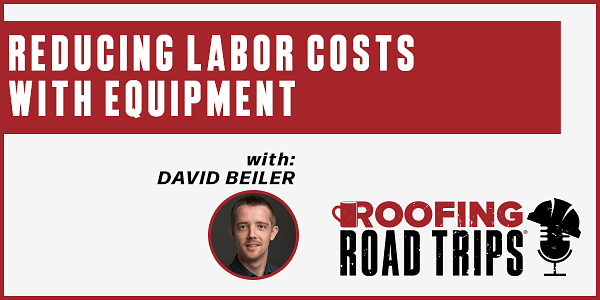
David Beiler - Reducing Labor Costs with Equipment - PODCAST TRANSCRIPT
Read More ...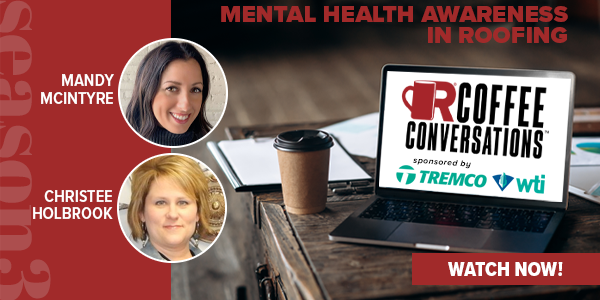
Coffee Conversations - The Importance of Mental Health Awareness in Roofing - Sponsored by Tremco & WTI - PODCAST TRANSCRIPTION
Read More ...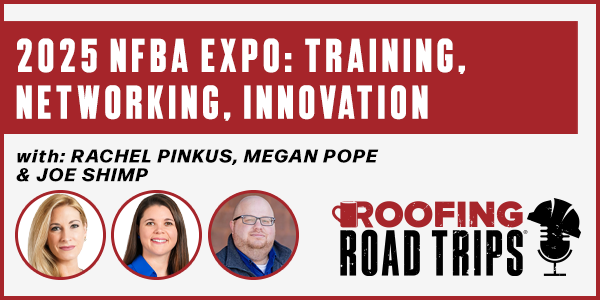
Rachel Pinkus, Megan Pope & Joe Shimp - 2025 NFBA Expo: Training, Networking, Innovation - PODCAST TRANSCRIPT
Read More ...
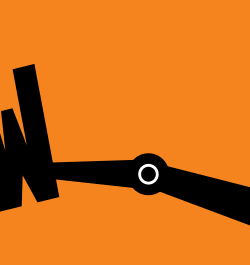












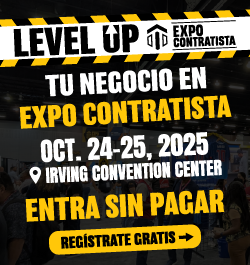

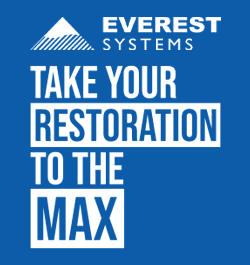
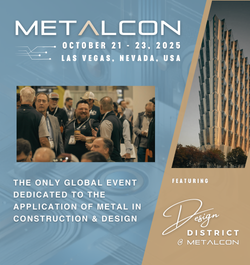

Comments
Leave a Reply
Have an account? Login to leave a comment!
Sign In